
Review on ESUN 3D 🖨️ One Additive Manufacturing Products by Hunter Siemon

My Favorite Filament
This filament has become my favorite filament for printing. I have Flashforge Creator Pro which I use daily to print various parts for photo and engineering projects. Before I found eSUN PETG, I mainly used ABS filaments. The problem I've found with ABS is that it tends to be a bit brittle and I've had a few parts that had trouble separating the layers under load. There is also the problem of distortion in large parts. When I switched to this thread I found it to be much stronger and a bit more flexible. This helped a lot when assembling the parts. Layer adhesion is amazing. I have yet to make an imprint that might not stay together. I've printed parts as large as my printer can handle (about 5-3/4 x 9 inches) and I've had no warping at all. That would be very difficult with ABS. My general print settings are: extruder temp = 230°C; bed temperature = 75°C; Travel speed = 150 mm/s and the platform is covered with Kapton tape. I replaced the stock extruder with a rebuild to use metal tubing instead of teflon and overall it seems to be much better and allow for higher extruder temperatures. Adhesion to the Kapton tape layer is very good. It was difficult initially to remove the printed parts (at a higher table temperature) but I found it much easier to let the table cool down before attempting this. I also removed the printer's top cover (like when printing from PLA) to allow the platform to cool down more as it prints with much better results. I found using this removal tool was perfect. (www.amazon.com/gp/product/B00VB1U886/ref=oh_aui_detailpage_o09_s02?ie=UTF8&psc=1) After the print has cooled in just 5 minutes, this tool can be used to detach even the largest parts from the bed without or damaging the Kapton tape . The slight twist this thread imparts to the finished pieces is why I use it as often as I do. I usually assemble more complex parts in sections and then screw them together with threaded inserts or plunge bearings in the recesses printed on the parts. When using ABS, I have found that when inserts are placed into a part, the part sometimes splits. Since using eSUN PETG I haven't encountered this problem yet and get very snug fitting inserts. I've attached some photos of the Focus Rail slider that I designed and printed using this thread. The prints have a layer thickness of 0.30mm from the low poly model used as a prototype, therefore the surfaces are rougher than what is possible with this filament. Also included is a photo of the small mounting clips printed at a layer thickness of 0.20mm to show the resolution of fine detail printed with this PETG. I highly recommend this filament for printing mechanical parts. I have used 20-25 different threads over the past 3 years and this is by far my favorite for quality, value and ease of use.
- 3D Printing Filament
- Unfashionable
New products
Comments (0)
Top products in 🖨️ 3D Printing Supplies
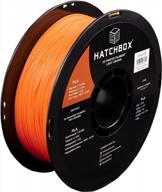
High-Quality 1.75Mm Light Orange PLA 3D Printer Filament By HATCHBOX - 1 KG Spool With +/- 0.03 Mm Dimensional Accuracy For Exceptional 3D Printing Filament Results

25 Review
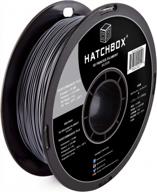
HATCHBOX Silver Performance PLA 3D Printer Filament - Dimensional Accuracy+/- 0.03 Mm For Superior Printing Results

30 Review
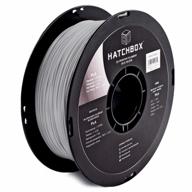
HATCHBOX 1.75Mm Silver Silk PLA 3D Printer Filament - Dimensional Accuracy +/- 0.03Mm, 1Kg Spool

32 Review
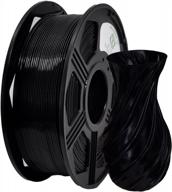
YOYI 3D Printer Filament - PETG 1.75Mm 2.2Lbs(1Kg) Spool, High Accuracy +/- 0.03 Mm, 100% New Raw Material!

32 Review
Another interesting products

High-Precision And Stable Creality Ender 3 V2 3D Printer With New UI, Silent Mainboard, Effortless Filament Feed-In, XY-Axis Tensioner, Resume Printing, And Large Build Volume Of 220×220×250Mm

11 Review

🖨️ FLASHFORGE Adventurer: Enhanced 3D Printer with Removable Extruders and Monitoring Features

4 Review
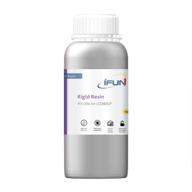
🔵 IFUN 3D Rapid Resin - Low Odor Photopolymer Resin for 405nm LCD 3D Printer - Fast Curing, Standard Rigid Formula - Sky Blue, 500g

5 Review
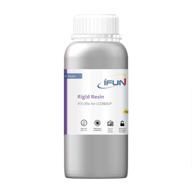
UV Curing Standard Photopolymer Printer by IFUN

5 Review

